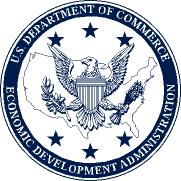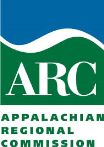
December 2013
|
The Mission of the Economic Development Administration (EDA) is to lead the federal economic development agenda by promoting innovation and competitiveness, preparing American regions for growth and success in the worldwide economy. The agency has a competitive grant process and has established the following investment priorities as criteria: collaborative regional innovation, public/private partnerships, national strategic priorities, global competitiveness, environmentally sustainable development, and economically distressed and underserved communities. Message From Acting Assistant Secretary
|
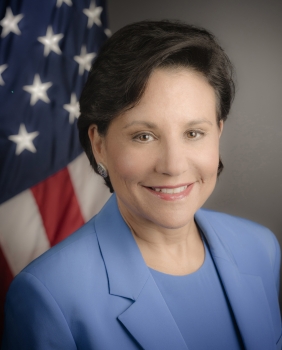 |
|
U.S. Secretary of Commerce Penny Pritzker |
Penny Pritzker was sworn in as the 38th Secretary of Commerce on June 26, 2013. She is a civic and business leader with more than 25 years of experience in the real estate, hospitality, senior living, and financial services industries. Ms. Pritzker founded and served as CEO of PSP Capital Partners, and previously developed such diverse companies as Vi (formerly Classic Residence by Hyatt), a leader in luxury living for older adults; The Parking Spot, a large U.S. network of off-site airport parking facilities; and Pritzker Realty Group. On November 14, Secretary Pritzker unveiled the Commerce Department’s “Open for Business Agenda,” a bold new policy agenda that reflects the Department’s role as the voice of business.
You recently outlined a new policy agenda for the Department of Commerce. What will the Department focus on under your “Open for Business Agenda”?
The “Open for Business Agenda” reflects the department’s role as the voice of business, and signals that the United States and the Department of Commerce are indeed ‘open for business,’ and focused on economic growth and job creation.
The Agenda focuses on three key areas that are crucial components of economic growth: trade, because our businesses need access to more markets and more customers; innovation, because our businesses need a strong digital economy, cutting-edge manufacturing and technology and a well-trained workforce to stay competitive; and data, because our businesses need access to more and better information to make smart decisions and stay ahead.
Related to trade, how can the U.S. best attract new foreign investment?
The President’s National Export Initiative (NEI) has achieved impressive results. We hit a record $2.2 trillion in exports last year, and nearly 10 million U.S. jobs are supported by exports, up 1.3 million since 2009.
However, we are still a nation that under-exports, and given the growth of global trade and the fact that 95 percent of consumers reside outside the U.S., it is clear that the greatest commercial opportunities for our businesses will be not only here at home, but also outside our borders.
That is why the “Open for Business Agenda” calls for NEI 2.0, a new effort that requires government and industry collaboration to help businesses become more globally fluent.
I will also work to ensure strong enforcement of trade rules and a level playing field for our workers. As our country’s Chief Commercial Advocate, I will do everything I can to open more doors for American goods and services and make the case for foreign direct investment (FDI) in the U.S. America has an unparalleled position to attract more FDI. Global businesses want to be here because of our rule of law, our intellectual property protections, our stable financial markets, our universities, our strong consumer base, and the ingenuity of our people.
To take full advantage of this moment, President Obama launched SelectUSA at the Commerce Department in 2011. Just a few weeks ago, 1,300 leaders from 60 countries came to DC for the first-ever SelectUSA Investment Summit. The demand for our summit was overwhelming, and the demand to invest in the U.S. is deep. The feedback from the summit was powerful, and we plan to make the summit an annual event and expand and enhance SelectUSA to help even more businesses grow their footprint here in America.
What steps will the department take to spur U.S. innovation?
Innovation is one of our major priorities because American businesses need cutting-edge technologies, a strong digital economy, and workers with the right skills. Innovation is the key driver of U.S. competitiveness, wage and job growth, and long term economic growth. As much as half of economic growth in the U.S. is due to advances in science, technology, and business processes.
The Department’s innovation agenda is comprised of three key components: manufacturing, skills, and the digital economy.
Manufacturing accounts for 70 percent of private R&D, 70 percent of patents issued, and the majority of U.S. exports. As the federal agency responsible for leading the government’s manufacturing policy, Commerce will support manufacturing at every stage of the product lifecycle. First, we are promoting the National Network for Manufacturing Innovation (NNMI), a bipartisan, industry-driven proposal that includes a network of commercialization hubs owned and operated by universities and corporations. The hubs will collaborate on applied research, conduct skills training, and accelerate new technologies into the market. This pre-competitive collaboration among leading-edge manufacturers is crucial to our manufacturing infrastructure.
On December 5, I addressed the White House Mayor’s Manufacturing Community Summit, where I announced the launch of the next component of the Investing in Manufacturing Communities Partnership (IMCP).
To compete in an increasingly global economy, the United States must come up with innovative strategies that will lead to economic growth and job creation around the country. The IMCP seeks to enhance the way we leverage federal economic development funds to encourage American communities to focus not only on attracting individual investments one at a time, but transforming themselves into globally-competitive manufacturing hubs.
An administration-wide initiative led by the White House and the U.S. Department of Commerce, the IMCP will encourage communities to devise comprehensive economic development strategies that strengthen their competitive edge in attracting global manufacturers and their supply chains. The IMCP specifically brings together the resources of multiple federal departments and agencies involved in economic development.
Through the publication of a Federal Register notice EDA is calling for applications for regions to compete to be designated as one of up to 12 “manufacturing communities”.
Please check the IMCP website at: http://www.eda.gov/challenges/imcp/ for more information.
A talented and skilled workforce is also an essential component of a modern, innovative economy, and there are millions of open jobs in America due to a skills mismatch, which threatens U.S. innovation and competitiveness. This focus is a first for the Department, but also a natural fit.
One of the major skills initiatives involves joining forces with the White House and the U.S. Departments of Labor and Education to transform workforce development, ensuring that our skills training programs are driven by industry needs. For our part, the Commerce Department will emphasize industry-led training when funding state-level partners that work with small manufacturers. In addition, Commerce’s Economic Development Administration (EDA) will encourage grant applicants to incorporate local workforce needs in their proposals. As you know, EDA promotes innovation by making strategic co-investments that catalyze local plans to grow regional innovation economies.
Looking forward, the Commerce Department will make sure that American businesses have a strong voice at the table when it comes to strengthening our digital economy, which is the great engine of innovation and economic growth of the 21st century. We will fight to protect intellectual property online. We will work to ensure there is robust cybersecurity for our infrastructure, for industry, and for consumers. And we will champion a free and open Internet throughout the world while making sure that our companies are treated fairly. In the months ahead, the Commerce Department will develop a coordinated approach to these and other Internet policies that affect business.
Why is data a top priority for the Department?
Data are the fuel that powers the 21st century economy. Commerce Department data touches every American and informs business decisions every day. The data enable startups, move markets, protect life and property, and power both small and multi-billion dollar companies. Commerce’s data priorities are to maintain the global preeminence of the federal government’s flagship statistical agencies, catalyze the emergence of new businesses, products and services powered by our data, and lead the development of open data frameworks and standards that improve data access, discovery and analysis – while continuing to protect privacy and security.
I know the value of Commerce’s data first hand, as my first startup 25 years ago was built with the help of information from the Census Bureau. Since then, the need for timely, relevant and accessible data to make informed business decisions has grown exponentially.
For example, the Department’s National Oceanic and Atmospheric Administration (NOAA) produces 2 terabytes of weather and climate data that power a multi-billion-dollar industry – everything from the Weather Channel to smartphone weather apps. Moving forward, we are taking the first steps to create a public-private initiative to unleash more NOAA data, which will help more entrepreneurs launch businesses using public information concerning our oceans, climate and weather.
Data does not get a lot of attention until it is not available. Americans were reminded of this when the Commerce Department’s economic reports were delayed due to the government shutdown. Businesses depend every single day on the rich data we provide. We want to make sure that both data and our digital economy are fully empowering entrepreneurs and businesses in the years ahead.
SUCCESS STORY
Port of Hood River, Oregon
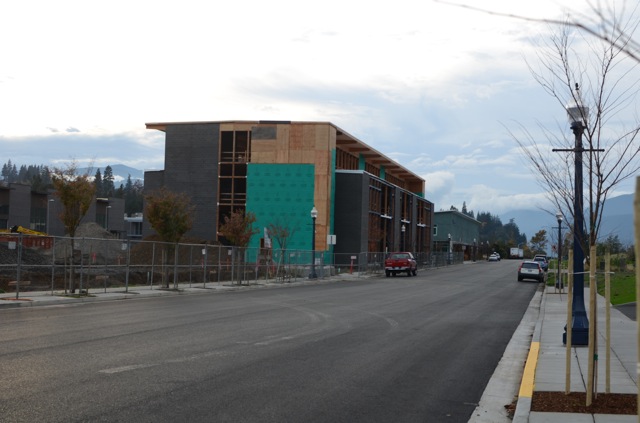
EDA-funded roadway improvements at the Port of Hood River, Oregon allow local businesses to expand operation
An EDA public works grant investment to the Port of Hood River in Oregon’s Hood River County has provided a remarkable return in the form of local business and job growth.
In April 2008, EDA awarded a $500,000 grant to support construction of interior road improvement and related utility upgrades on the Port’s 8-acre industrial park. The improvements were prompted by tenants with growing pains caused by limited large truck access and lack of future freight mobility.
Infrastructure expansion was needed to give the local economy a much needed boost. The area unemployment rate was 6%, and the average per capita income was $27,173, more than 20% below the U.S. average. However, any improvements would have to account for both the industrial and recreational uses of the Port. Further, local residents’ concerns about increased business traffic had to be addressed. Planners had their work cut out for them.
Fortunately, the Port was up to the task. Changes were made both carefully and below original cost estimates, allowing for a finished project that has improved the local business climate, increased employment, and raised quality of life.
According to Port of Hood River Executive Director Michael McElwee, the EDA Public Works grant was instrumental to the rapid development on the waterfront. “Two key pieces of infrastructure were needed: Anchor Way, a new industrial road for truck access, and upgrades to an existing but substandard street. The area was particularly challenging because the industrial core borders active recreation sites. EDA’s investment enabled the placement of necessary infrastructure at a critical time when local businesses were seeking to expand. The resulting private investment and job creation has provided an enormous benefit to our community.”
At the time of the grant, there were nine principal tenants on site, including the Full Sail Brewing Company, Boeing, and Turtle Island Foods that in aggregate occupied about 100,000 square feet of light industrial space. Seasonally adjusted employment on the site totaled just 24 persons.
Once construction was completed, several of the tenants were able to advance their expansion plans. The improvements also attracted additional tenants, including Hood River Juice Company, Pfriem Brewing, and DaKine. Today, 23 tenants occupy 233,000 square feet, total employment is 371 persons, and private sector investment has reached $33.85 million.
The Port anticipates future demand and is poised to accommodate up to an additional 40,000 square feet of light manufacturing space. Officials project that another 50 area jobs will be added as a result.
EDA sees the Port’s success as an excellent example of how a small and targeted investment can quickly generate tangible and sustainable economic benefits for an entire community.
SPOTLIGHT
Commerce Secretary Penny Pritzker Launches Investing in Manufacturing Communities Partnership Competition
On December 5, Commerce Secretary Penny Pritzker addressed the White House Mayor’s Manufacturing Community Summit, where she launched the next component of the Investing in Manufacturing Communities Partnership (IMCP).
The IMCP is designed to reward communities that demonstrate best practices in attracting and expanding manufacturing by using long-term planning that integrates targeted investments in workforce training, infrastructure, research, and other key assets.
Through the publication of a Federal Register notice, EDA is calling for applications for regions to compete to be designated as one of up to 12 “manufacturing communities.”
In order to earn the designation, communities must present strategies that identify technologies or industries in which their communities would be competitive in the future and would make investments, such as:
- Workforce and training
- Advanced research
- Infrastructure and site development
- Supply chain support
- Export promotion
- Capital access
Designated communities will have an array of benefits, including:
- Elevated consideration for federal dollars and assistance across 10 cabinet departments/agencies, totaling $1.3 billion
- A dedicated federal liaison at each of these agencies who can act as their concierge to the specific services they need
- Subject to funding availability, challenge grants may become available to some awardees from the pool of designated manufacturing communities from EDA and other agencies
- Recognition on a government website, accessible to prospective private foreign and domestic investors, looking for information on communities’ competitive attributes
Regions are invited to apply as a consortium that includes at least one of the following:
- Regional economic development district organization
- Indian tribe
- State, county, city or local government engaged in economic infrastructure development activities
- Institutions of higher education
- Public or private non-profit organizations or associations acting in cooperation with local government officials
The IMCP will foster an integrated, comprehensive approach to economic development throughout the country – encouraging local leaders to think even more strategically about how to align all of their efforts to attract investment and support burgeoning industries -and is a critical component of the Department’s "Open for Business Agenda.”
Applications are due March 14th, 2014.
HIGHLIGHTS
EDA Issues 2014 Economic Development Assistance Programs Federal Funding Opportunity
On Monday, November 25, 2013, EDA published its FY 2014 Economic Development Assistance Programs Federal Funding Opportunity (EDAP/FFO) on grants.gov.
Under this FFO, EDA solicits applications from applicants in rural and urban areas to provide investments that support construction, non-construction, technical assistance, and revolving loan fund projects under EDA’s Public Works and Economic Adjustment Assistance programs. Grants and cooperative agreements made under these programs are designed to leverage existing regional assets and support the implementation of economic development strategies that advance new ideas and creative approaches to advance economic prosperity in distressed communities.
The first funding cycle of FY 2014 is covered under EDA’s FY 2013 Economic Development Assistance Programs FFO dated November 26, 2012.
The next four funding cycle deadlines are:
- December 13, 2013 for funding cycle 2 of FY 2014;
- March 14, 2014 for funding cycle 3 of FY 2014;
- June 13, 2014 for funding cycle 4 of FY 2014; and
- October 17, 2014 for funding cycle 1 of FY 2015.
To be considered during a particular funding cycle, completed applications must be validated and time-stamped by Grants.gov by 11:59 p.m. Eastern Time on the applicable funding cycle deadline. Alternatively, paper applications may be delivered to the applicable regional office listed in section VIII. of this FFO. Paper applications must be received no later than 5:00 p.m. local time in the applicable regional office on the funding cycle deadline and the applicant must use a delivery confirmation service from their selected carrier. If an application is received after the deadline, it will be considered late and will not be reviewed by EDA for that funding cycle.
|
|
|||
In This Issue
Acting Assistant Secretary Erskine keynotes the Appalachian Regional Commission Fall Conference “Toward Prosperity: Entrepreneurship Transforming Appalachia's Economy” in Charleston, West Virginia
On Thursday, November 7, Acting Assistant Secretary of Commerce for Economic Development Matt Erskine delivered the keynote address at the “Toward Prosperity: Entrepreneurship Transforming Appalachia's Economy” conference that was hosted by the Appalachian Regional Commission in Charleston, West Virginia. In his remarks, Acting Assistant Secretary Erskine discussed how the Obama administration is working to help support innovation and entrepreneurship in the Appalachia region through initiatives like the Rural Jobs and Innovation Accelerator Challenge and by investing to support the growth of the healthy economic ecosystems that are essential to advancing American competitiveness. Erskine also discussed the importance of wide, regional collaboration to executing successful economic development projects. Watch Acting Assistant Secretary Erskine’s remarks. U.S. Cluster Mapping Website Now Features Regional Case Studies
The U.S. Cluster Mapping and Registry website was created through a strategic investment by the Economic Development Administration (EDA) to Harvard Business School to generate practical, user-friendly cluster tools that can help you understand and map your community’s strengths and assets in order to better develop the strong, regional-focused economic development strategies that are so critical to our national competitiveness. Recently, four regional case studies, covering Oregon, Minnesota, South Carolina, and Massachusetts, were added to the site. These real-world examples show how clusters have been used as an instrument for collaboration among organizations and a framework for public policy, and how economic development practitioners can leverage data from the U.S. Cluster Mapping website to achieve tangible results. Each study tells a unique story, but all provide lessons learned that can be applied and extended to other regions. BusinessUSA: Making it easier to do business in America
Making it easier to do business in America. That’s the core objective of BusinessUSA. Approaching two years since its launch in early 2012, BusinessUSA was created to provide businesses a better entryway into the host of programs and opportunities the federal government has to offer. Too often, interactions with the government are burdensome, frustrating, and confusing. BusinessUSA aims to fix that by providing a single point of access to those programs and resources relevant to business owners and exporters. It is BusinessUSA’s mission to ensure that potential and existing business owners have access to programs and opportunities that can help them grow and succeed. Agencies and Departments from across the federal government have collaborated on the site to ensure that users have access to many programs and resources they might not otherwise be able to find, as well as complementary resources from other providers. The site offers easy to use, step by step tools for starting or growing a business, starting or expanding exporting operations, getting disaster assistance, finding opportunities, and more. BusinessUSA is also a place business owners can go to get information about the new health care law. Check out BusinessUSA today. You’ll get the same great experience on your smartphone or tablet that you get on a PC or Mac. The site has easy to access assistance options as well, with tour and ask-a-question tools. Let BusinessUSA help you open doors to the assistance you’re looking for, at: business.usa.gov/. National Institute of Standards and Technology Hollings Manufacturing Extension Partnership Awards Grants to Help Manufacturers "Make it in America"
The Hollings Manufacturing Extension Partnership (MEP) has awarded a total of $3.75 million in Make it in America grants to 10 MEP centers in nine states. The 3-year grant awards are in addition to the recently announced $20.5 million in Make it in America funding from the Department of Commerce's Economic Development Administration, the Department of Labor's Employment and Training Administration, and the Delta Regional Authority. The overall objective of the Make it in America Challenge is to make it more attractive for businesses to build, continue, or expand their operations in the United States. |

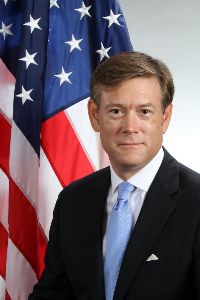 Dear Friends,
Dear Friends,